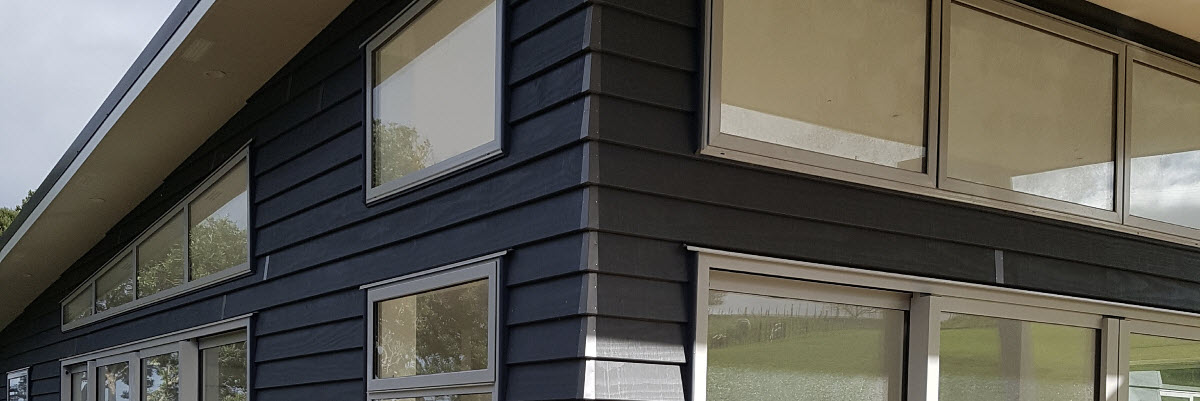
Soakers
Soakers are a proven option for waterproofing corners and joints for bevelback weatherboards. They are shaped-metal profiles that are joined over the top surface of the weatherboard acting as an externally fixed flashing to prevent moisture getting through joints and corners. They are specifically sized to each profile, so contact our sales team for more info.
Corner Mouldings
We have a wide range of corner mouldings available in different species and finish options, depending on the requirement. These offer design flexibility and are generally fixed over a flashing to provide a robust and compliant weather seal.
Flashings
Flashings prevent external moisture entering in to joints. They are essential for exposed mitred corners. Flashings are metal or UPVC profiles that usually run vertically down the corner behind the weatherboard to stop water getting into this vulnerable area. We have different options depending on the design requirements.
Scribers
Scribers are used at the corners for weather-proofing around corner joints. This is a small strip of wood that runs vertically down the wall and butts up to the joinery or boxed corner to keep moisture out.
Fascia
Fascia is the band or vertical frieze under a roof edge which is usually attached to guttering. Available ex-stock in a range of sizes, finishes and in three species.
Timbers available
Accoya® wood: A durable, stable and non-toxic timber with performance characteristics better than any hardwood.
Western Red Cedar: This durable timber has great stability and is a popular and attractive option.
Radiata Pine: A medium density softwood, straight grained with an even texture. It is treated to H3.2 for durability and works well with hand and machine tools. Must be paint finished and in light colours only.
Finishes available
Dressed face: Machine finished with a smooth surface.
Band Sawn: The natural timber texture is accentuated making it textured to touch.
Western Red Cedar: ITI Timspec recommends that all faces (hidden and exposed) should be coated with a minimum of two coats of a suitable approved penetrating oil or stain. All cut ends and any exposed timber should be coated with a further two coats. Refer ITI Timspec Installation Manual for details.
Accoya® Wood: For optimal paint system performance, like all conventional wood species, Accoya® wood requires application of a breathable paint system. This summary guide provides key recommendations for coating including staining Accoya®. (Download Accoya painting guides here). Please note, Accoya® weatherboards may be installed as bare or uncoated.
Radiata Pine: ITI Timspec recommends a minimum four coat paint system with an LRV of 45% or higher, comprising a primer, undercoat and at least two exterior grade top coats, to be used on treated Radiata Pine weatherboards. The paint manufacturer's maintenance schedule for the selected paint system, must be strictly adhered to.
Despite the fact that a stain finish on H3.2 treated Radiata is acceptable under the current NZ building code, ITI Timspec does not recommend the use of any semi-transparent solvent or water-borne stain or penetrating oil finish on treated Radiata Pine weatherboards, as unacceptable aesthetic and performance issues can occur even on light colours and even if relatively onerous maintenance requirements are followed.
Our advice is that, we do not recommend oil and or stain finishes on Radiata. If done it is on an "all care and no responsibility" basis. We need written acknowledgement of this being agreed prior to supply.
Stains and Coatings: There are multiple coating options available and a wide range of colours for each different species. Following are a few points to consider when coating your weatherboards.
Colours: Dark colours will cause the weatherboard to attract more heat, thus they are more likely to distort. Dark colours are not recommended for Western Red Cedar and Radiata Pine.
For Western Red Cedar, if you are wanting to achieve a natural timber colour, a small level of pigmentation is required to block UV light and colourless transparent coatings are available. Please note, transparent coatings will break down very quickly in the outdoors and may require recoating after six months.
Accoya® can be painted black or left to weather naturally which gives it a grey colour over time.
Type of the coatings: An oil finish looks very different to a urethane finish.
Timber finish: Band-sawn timber absorbs up to twice the amount of product compared to a dressed face. Therefore it will cost more to coat a band-sawn face and it will give a darker appearance once coated.